I don’t even know how to talk about my recent experience hiking to the summit of Mount Whitney, the highest peak in the contiguous United States at 14,505 feet. It was amazing, challenging, surreal, and, in a word: epic. It ranks as one of the hardest physical challenges I’ve ever faced, and that’s saying a lot after running eight full marathons. As my husband Mike said, I wouldn’t call it “fun,” although it was euphoric when we reached the top. The problem is that when you reach the top, you still have 11 miles to hike back down to the bottom. I’m glad we did it. I’m glad we learned some things along the way.
This adventure all started when my oldest daughter Shannon declared her desire to climb Mount Whitney (and then graduate to climbing all of the seven summits — the highest peaks on all seven continents, which she set her sights on after reading the wonderful book No Summit Out of Sight (Amazon affiliate link, but I highly recommend this book for girls and boys ages 10 and up and all adults)).

The road to Whitney Portal — mixed emotions as we faced hiking that mountain range!
I was intimidated by the thought of climbing Mt. Whitney, and rightly so. We had climbed Mt. Baldy twice (10,064 feet), including a night hike to see the Perseid meteor shower and watch the sunrise on the peak. We hiked Mt. San Jacinto (10,833 feet). And we would have hiked the other of the big three peaks in Southern California — Mt. San Gorgonio — if the entire wilderness area had not been closed due to fire damage (it’s since been reopened). We ran the Yosemite Half Marathon as part of our training. We attended an REI class (no affiliation) as part of our preparation. I read the book One Best Hike: Mount Whitney. We entered the lottery in February/March to get a permit to climb the mountain, but we didn’t win a permit (only 35% of applications are successful). Finally as the date neared and other people canceled their reservations, Mike secured three overnight permits to hike the Mt. Whitney Trail (and then we showed up at the Eastern Sierra Interagency Visitor Center to trade for a same-day permit to enter the area on Monday, August 27 and summit on my 47th birthday, Tuesday, August 28).

The intimidating view from the parking lot at the Mount Whitney trail head at Whitney Portal.
After securing our permit at 11:30, getting lunch and driving up to Whitney Portal, we hit the trail at 1 p.m.

Mike, me and Shannon on the trail
We hiked the first 3.8 miles slowly to start, knowing that the elevation gain from 9,000 feet at the Whitney Portal to 10,400 feet at Outpost Camp could be hard on people coming from sea level. We reached Outpost Camp around 4 p.m. and felt great. In retrospect, we should have camped there for the night, but we figured we might as well continue on to Trail Camp at 12,000 feet another 2.3 miles up the trail. (In hindsight, if we had had more time, we should have acclimated at 10,000+ feet for 1-2 days before heading out on the trail — we didn’t realize how much we would be affected by altitude sickness). Unfortunately, the next two challenging, technical miles took 2.5 hours, and we ended up stopping just short of Trail Camp to camp at Consultation Lake, a gorgeous spot that’s not nearly as crowded and I highly recommend, as long as you have the right tent and sleeping bags to withstand any wind and cold at that location.

Shannon at Consultation Lake on the Mt. Whitney Trail
We set up camp alongside the lake. It was cold at 6:30 p.m. and we were all feeling the effects of mild altitude sickness — headache and slow moving.

Our solo campsite at Consultation Lake as the sun set on the mountain range.
In our altitude sickness haze, Shannon and I thought Consultation Lake was actually called “Consolation Lake,” as in the lake was the consolation prize if you did not actually make it to the peak of Mount Whitney! It was such a gorgeous spot to camp and I’m glad we stopped there before hiking another half a mile to Trail Camp.
We slept fitfully at altitude and waited until sunrise to get going.

Sunrise at Consultation Lake, looking back toward Lone Pine.

Moon setting over the mountain range at dawn.
In retrospect we should have awoken at 4 or 5 a.m. and gotten on the trail. We thought we’d have plenty of time to hike 5.4 miles to the summit by 1:30 p.m. (the recommended turn-around time if you haven’t made it to the summit).
We stopped at Trail Camp to filter some water for the ascent. A clever chipmunk outwitted us and snuck into one of the open back packs, which led to the best quote of the hike: “A chipmunk stole my birth control pills!”
 I guess the little critter had been conditioned to learn that food comes in plastic containers, and the white plastic pack looked as good as any other food. We managed to move some rocks and rescue the pills before the guy had a chance to gnaw his way through the pack! We also saw marmots and a pika on the trail!
I guess the little critter had been conditioned to learn that food comes in plastic containers, and the white plastic pack looked as good as any other food. We managed to move some rocks and rescue the pills before the guy had a chance to gnaw his way through the pack! We also saw marmots and a pika on the trail!
The mountain range became more and more intimidating and impressive.

Impressive mountain range with amazing deep blue skies.

View from Trail Camp
On the way up the infamous 99 switchbacks, we saw icicles on the rocks and pink snow pack on the mountainside.

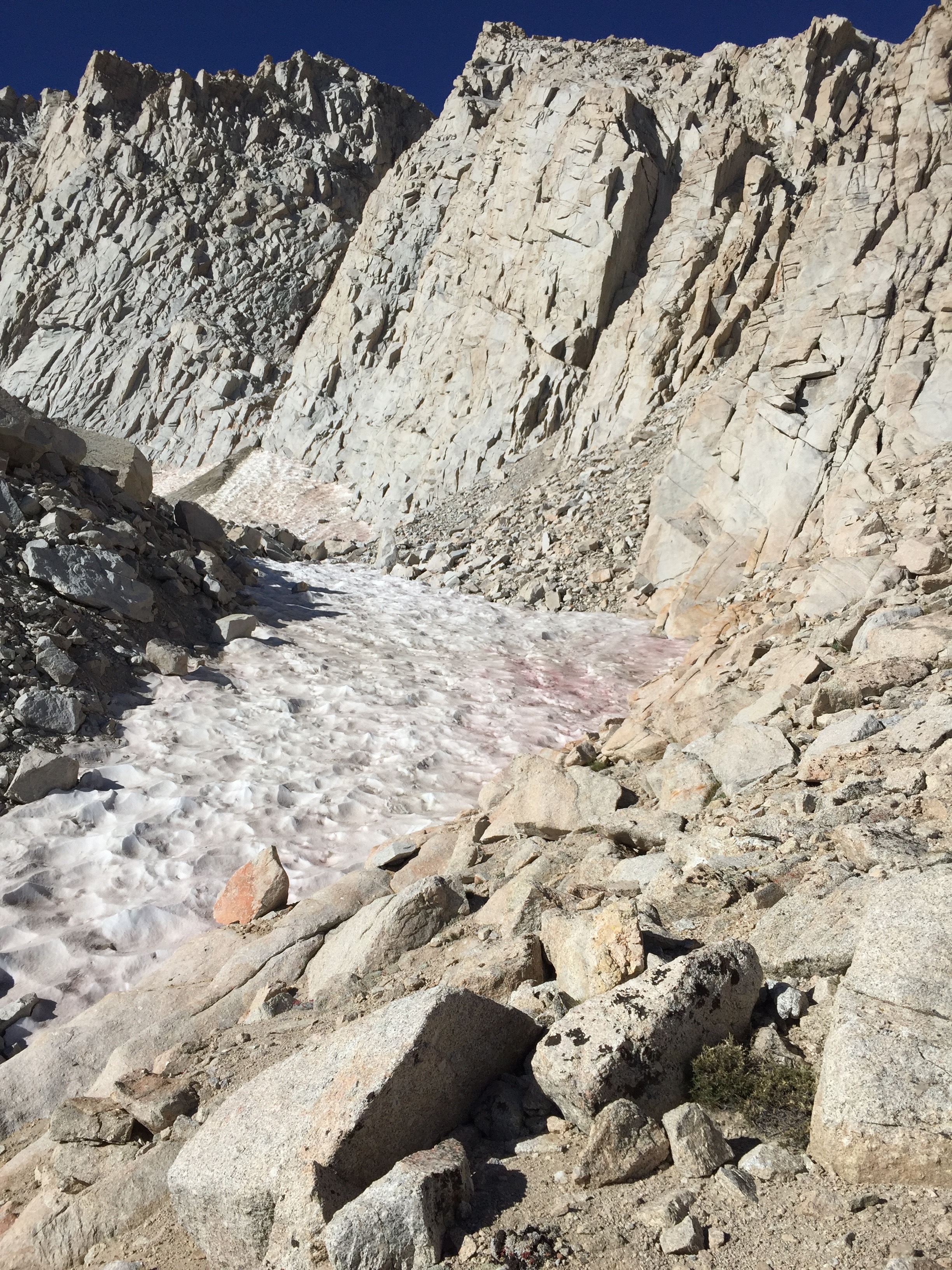
We could see back to Consultation Lake as we gained elevation.
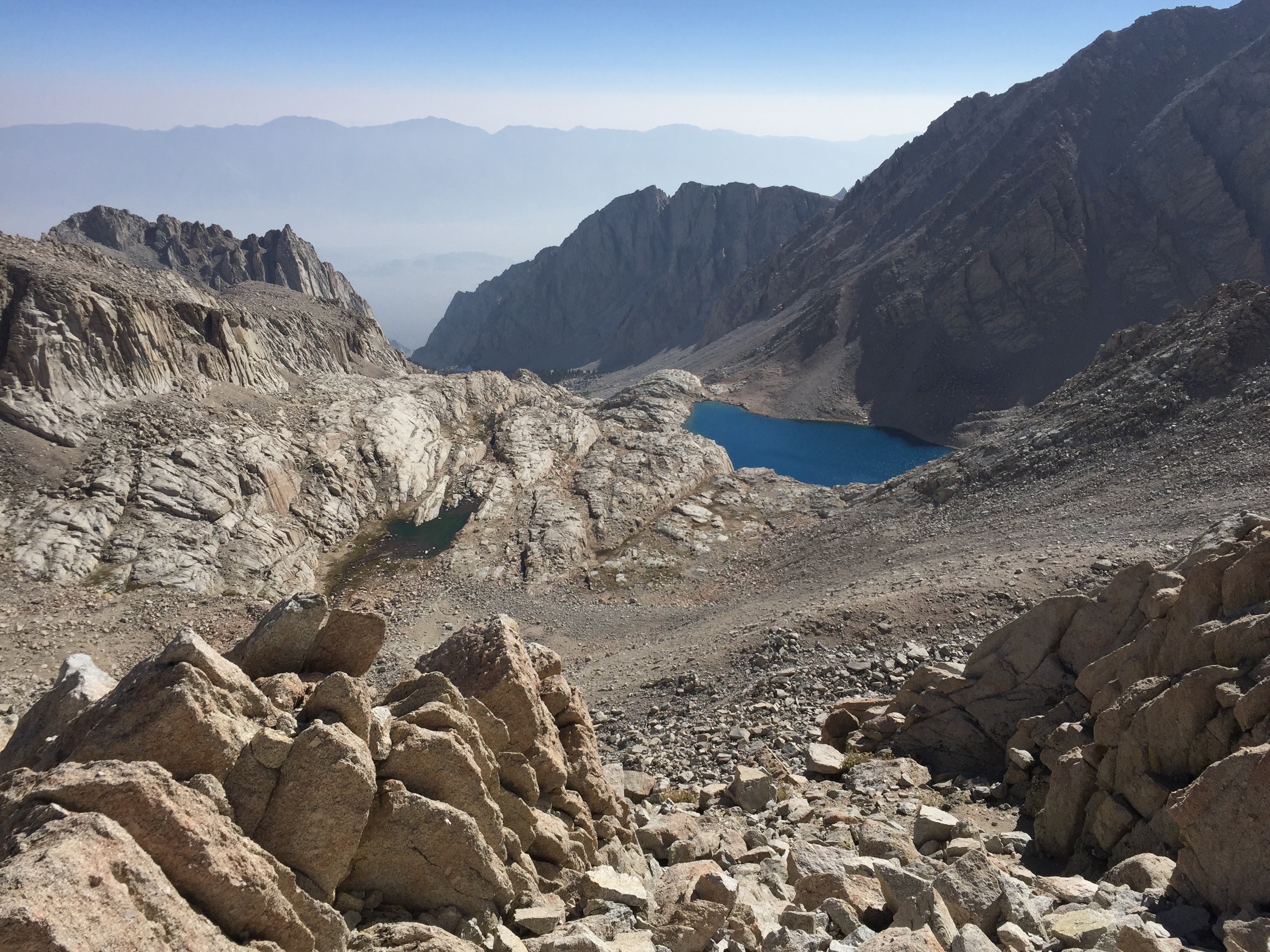
One of my favorite parts of the hike was just after the Trail Crest, when you enter Sequoia National Park and look over parts of the park that you can only see from the Mt. Whitney Trail or John Muir Trail.
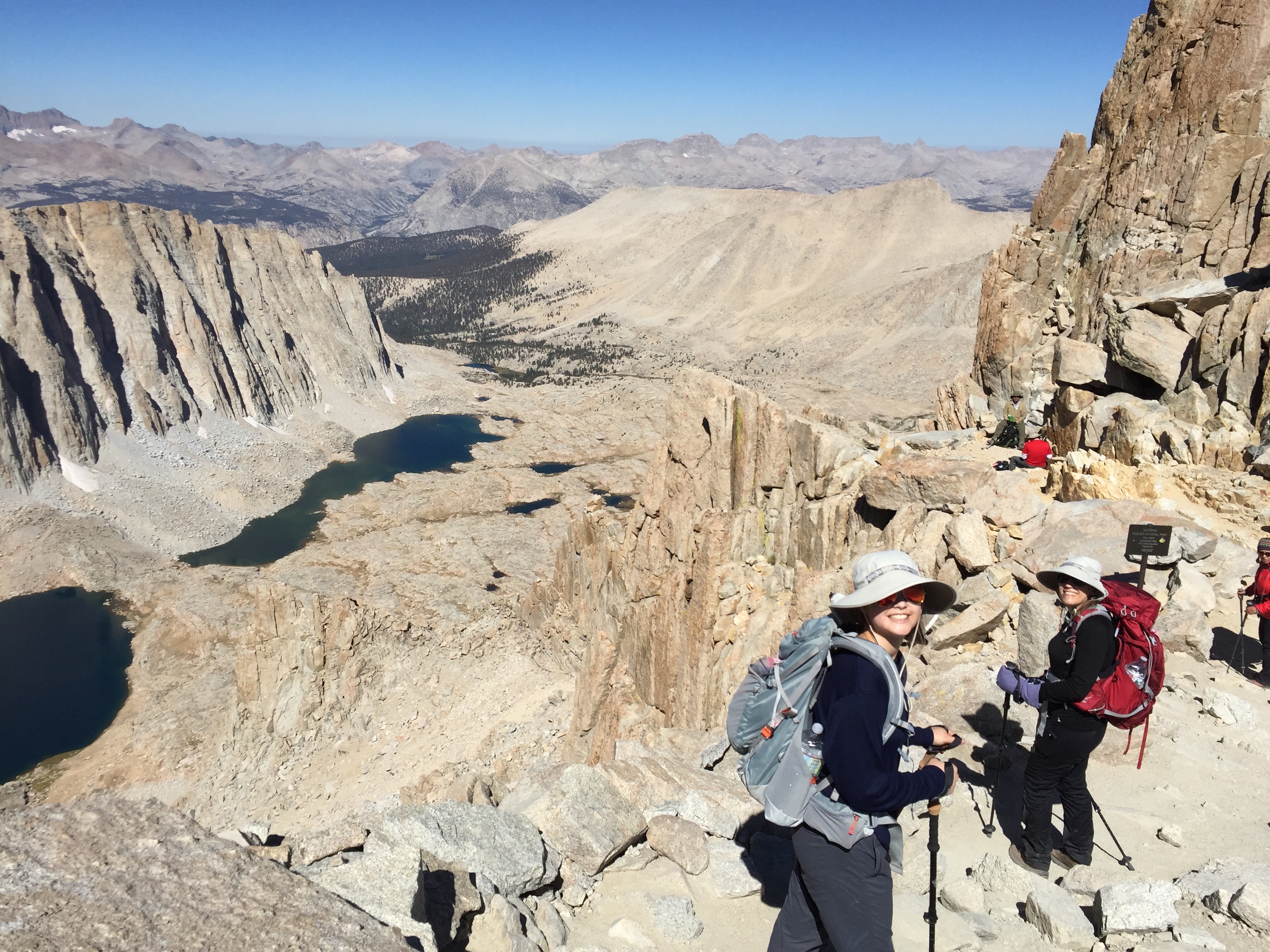
Shannon and me at Trail Crest, overlooking Sequoia National Park.
Finally at 1 p.m. we reached the summit, 14,505 feet.

Me, Shannon and Mike by the plaque at the summit.
I asked everyone at the summit (about 10 people) to sing Happy Birthday to me. Mike gave me a special birthday gift, a Mt. Whitney survey medallion to hang on the Christmas tree. Shannon took this photo of me with a sign that happened to be made by another Angela who was also turning 47 in another two weeks!

Mount Whitney, 14,505′, August 28, 2018
We were the 88-90th hikers of the day to sign the log book at the Mt. Whitney summit shelter.

There are no photos of us hiking the 11 miles down the mountain. We reached Consultation Lake again around 5 p.m. and packed up camp. Unfortunately, I would have liked to have been done with the hike right about then. We still had another 5.6 miles to go, though. It went considerably slower than we anticipated, due to continuing altitude sickness and just plain tired legs. The problem was that we went slower due to altitude sickness (both to try to prevent it and to fight it off) and that meant more time on our legs. I think we trained adequately for the hike but would have been much happier had we acclimated for a day or two at 10,000+ feet before starting the hike (given that we live at sea level). But we only had two days to do it (thank you Grandma for watching our other two girls for two days while we hiked!) and we did the best we could with the time we had. I’m still sore a week later (calves mainly) but am back to working out and have my sights set on San Gorgonio and Half Dome next!
Have you hiked Mt. Whitney or is it on your bucket list? What other hikes are your highest and/or most recommended? Whitney was amazing and I’ve never seen the sky look so blue. I’d say go for it if you’ve always wanted to climb it, just make sure to do your homework and spend time acclimating first if you need it!














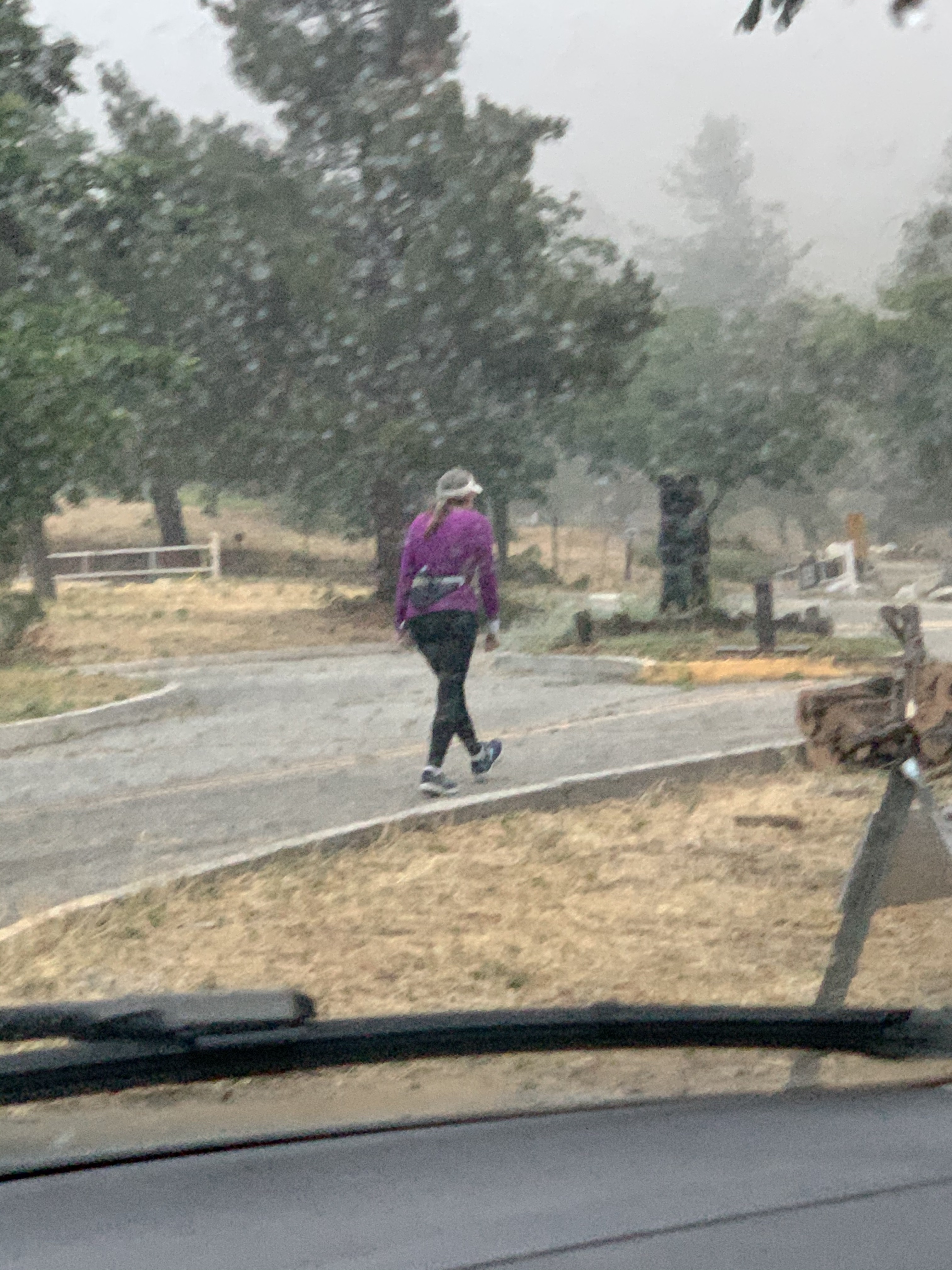






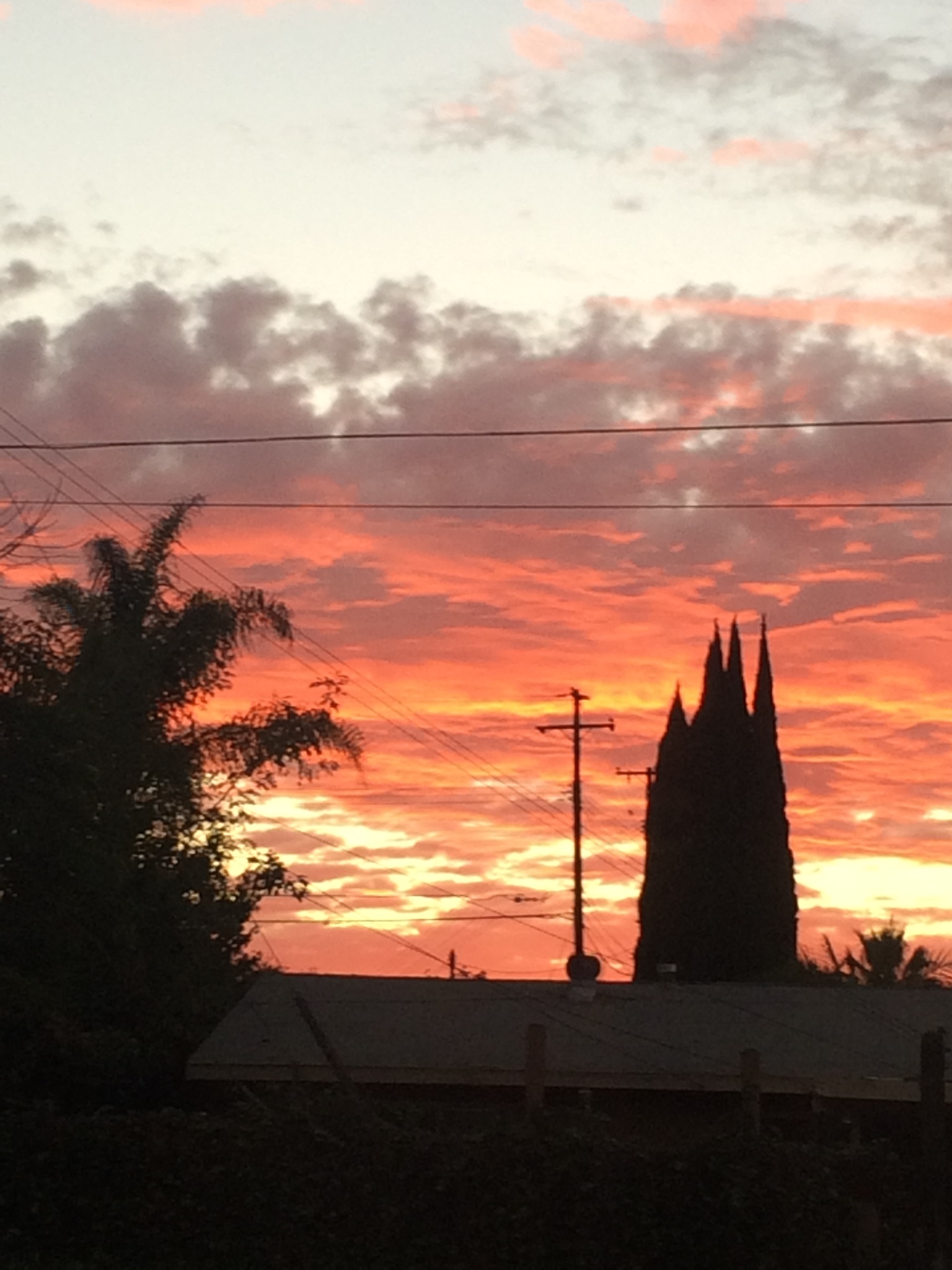







 I guess the little critter had been conditioned to learn that food comes in plastic containers, and the white plastic pack looked as good as any other food. We managed to move some rocks and rescue the pills before the guy had a chance to gnaw his way through the pack! We also saw marmots and a pika on the trail!
I guess the little critter had been conditioned to learn that food comes in plastic containers, and the white plastic pack looked as good as any other food. We managed to move some rocks and rescue the pills before the guy had a chance to gnaw his way through the pack! We also saw marmots and a pika on the trail!







